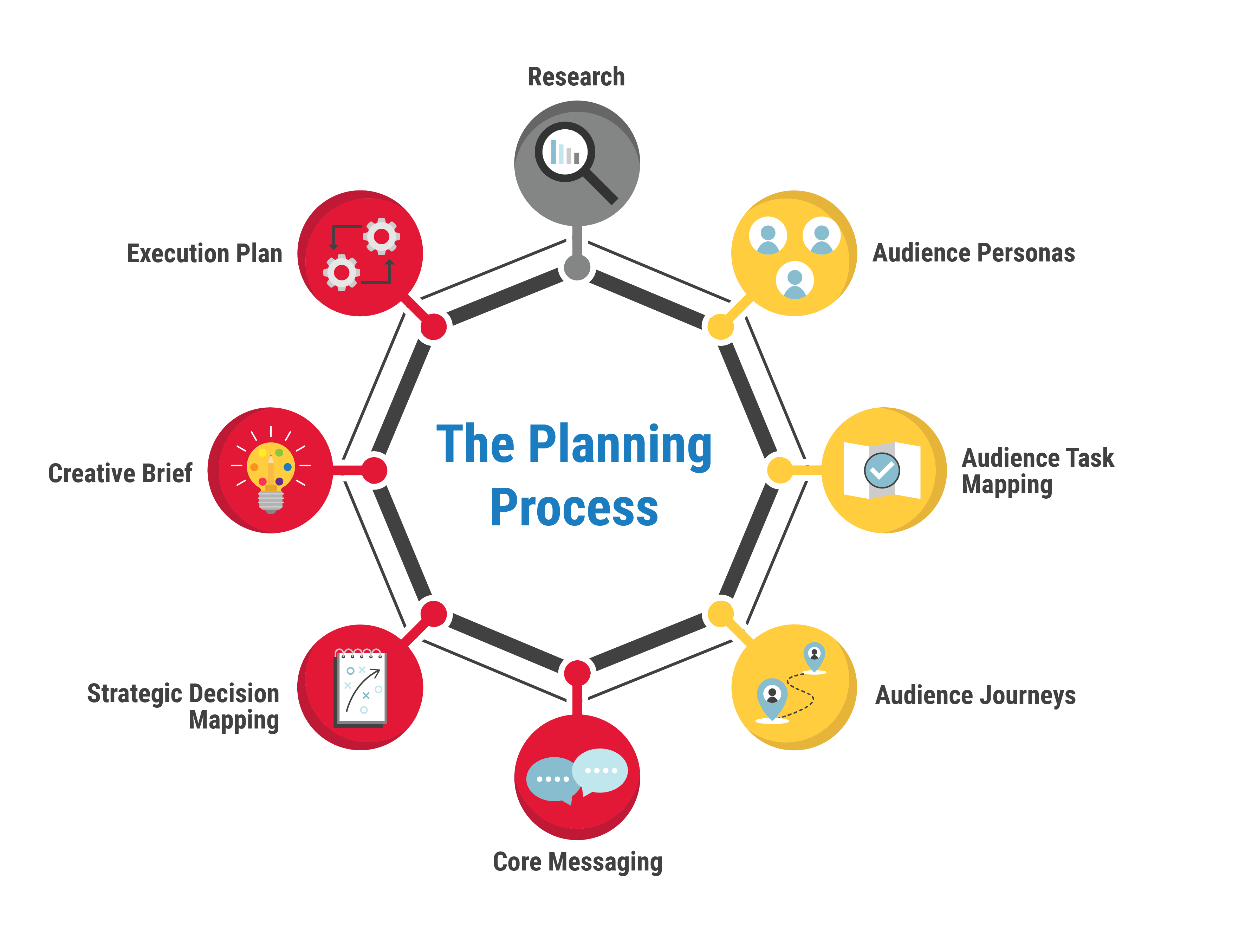Digital Marketing Backed by Sound Planning
As a building materials manufacturer (BMM), you undoubtedly possess a number of key digital marketing assets designed to engage with customers and prospects, raise your company’s profile, and ultimately drive business and sales.
Among the assets are a website, your company’s front door to the world. Perhaps you have an eMarketing program that sends out a series of eBlasts to customers and prospects. You might even have a digital marketing campaign involving paid media that is aimed at driving awareness, website visits, conversions, or all the above.
Here are the key questions you must ask yourself: Has your company developed and delivered a plan to ensure that these assets and tactics are working in tandem with each other to achieve maximum success? And have you defined success? Do you know what it looks like and how to measure it?
To achieve measurable and verifiable results on the digital marketing front, it is important to consider the creation of a digital marketing ecosystem that employs a hub and spoke approach. The hubs of the ecosystem are your primary digital assets – your company website, or campaign-specific landing pages. The spokes are the various digital tactics and strategies you employ to turn casual observers into prospects and prospects into customers. The connective tissue is your brand message and story, which must remain consistent across the board.
Structuring a Plan
Getting started on a digital marketing ecosystem is no different than the starting point for building any kind of structure: You must first develop a sound, detailed plan that gets you from breaking ground to turning the key. Once that plan is in place and is activated, you must also be prepared to adjust and change your approach as you test and learn certain tactics, identify what is working, and modify what may not be driving results.

- Research – both qualitative and quantitative – lays the foundation for everything that will take shape in a digital marketing ecosystem. What are the latest trends impacting your industry sector and your product offerings? What insights can you glean from those trends that can inform a go-forward strategy for both messaging and engagement? What are your customers, employees, and prospects telling you? You also need to audit your competition to understand your position in the marketplace, how you differentiate yourself, and where you rank.
- Next comes the development of audience personas. You need a clear picture of your targets – who they are, how they think, and what will motivate them.
- Audience task mapping takes those audience personas and dives deeper into current mindset, motivations, barriers to engagement, and then the desired mindset you hope to achieve with them as they interact with your brand.
- It is then important to understand the desired audience journey. You need to anticipate how they will interact with your brand, what feeling or sentiment they might take away, how you intend to alter that or reinforce it, and how they transform from observer to engaged customer.
- From these insights, your brand can begin to develop core messaging for the digital marketing efforts you will undertake. These ultimately integrate your brand story and the insights you’ve gleaned about your audience. They should then be engineered to position the brand as a solution to a specific set of problems or challenges.
- Strategic decision mapping begins to fuse all the pieces into an integrated strategy. It matches your audiences with the appropriate core messaging so you begin to hear the company’s voice in the mind of a prospect and how it will resonate.
- A creative brief ties everything together – from objectives, target audiences, the problem the brand looks to solve, a competitive analysis, brand attributes, and the anticipated deliverables to create and feed a digital marketing ecosystem.
- The execution plan turns strategy and messaging into tangible deliverables and activities. A full plan should integrate paid, earned, and owned media strategies with compelling creative that has stopping power and KPIs that are relevant. The plan should include milestones, timing, and an understanding of how execution will be adjusted over time based on an analysis of results.
The Holistic Approach, Backed by Strategy
Developing, nurturing, and sustaining a digital marketing ecosystem for today’s building and construction brands stretches well beyond the occasional eblast, the periodic digital newsletter, or a few updates to the company’s website.
It requires a wide angle lens that takes the larger picture into account – about your brand, where it sits in the marketplace, what it aspires to be, and how that will resonate with your key audiences.
Armed with that intelligence, you can map out an integrated strategy that clearly defines success and selects the right mix of strategies and tactics to drive brand awareness, conversion, and revenue generation.
Partner with BLD Marketing, and get started on the development of a customized digital marketing ecosystem for your brand.
Let’s talk.
Have a specific marketing challenge? Looking for a new agency?
We’d love to hear from you.
